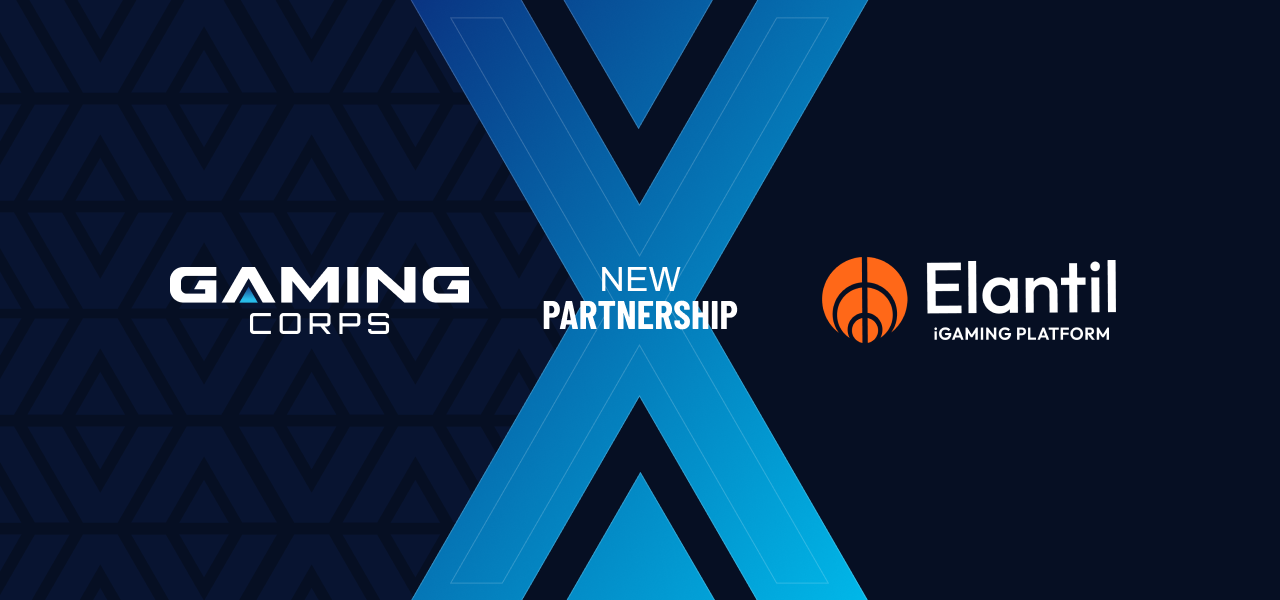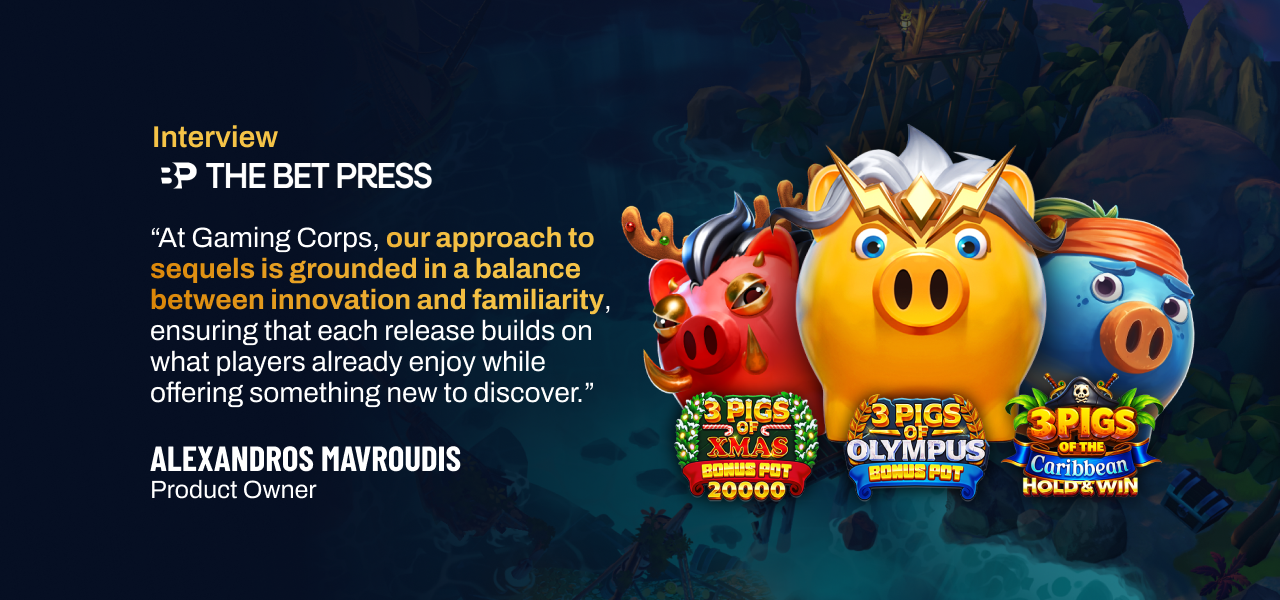Canada’s iGaming market is rapidly expanding, with Ontario’s regulated sector reaching CA$3.2bn in 2024 and further growth expected as Alberta and other provinces move toward regulation. The country’s large player base and strong entertainment spending make it highly attractive, though suppliers must navigate varying provincial rules and diverse consumer preferences.
Supplier success in Canada hinges on localisation, compliance, and strong partnerships with operators and regulators. Incline Gaming Marketing, Kiron Interactive, Elantil and Gaming Corps share their expertise on tailoring content to regional tastes, embracing innovations such as AI-driven compliance and alternative game formats, and preparing for future shifts with cryptocurrency payments and cross-border player pools.
What makes Canada an attractive yet uniquely complex market for iGaming suppliers, and how are you tailoring your approach to stand out?
Haig Sakouyan, VP, Partner Success at Incline Gaming Marketing: Canada continues to draw attention thanks to high engagement and a steadily evolving regulatory landscape. Ontario has matured quickly, Alberta is gaining momentum, and British Columbia remains a controlled but valuable piece of the puzzle.
Having worked with companies across Ontario and Alberta, we understand how different each region operates. For suppliers, standing out means being ready to support partners with tailored materials and a clear value story.
That often includes localised websites, refreshed UI elements, or updated sales visuals to meet operator expectations. A lot of tech claims to work for this space, but not everything delivers in practice. Being thoughtful early on pays off.
Terry Debono, Kiron Interactive: Canada represents one of the most promising iGaming markets globally. It has a population of 41 million people, with Canadians enjoying strong discretionary spending on entertainment, including gambling.
For many years, Canada was considered a grey market, but in 2022, Ontario (40 per cent of Canada’s population and GDP avg.) established iGaming Ontario (iGO), allowing online gaming operators to enter Ontario as a regulated marketplace. Since launch, the market has demonstrated remarkable growth:
● 2022: $1.4bn GGR CAD (nine months of operation)
● 2023: $2.4bn GGR CAD (72 per cent growth from 2022)
● 2024: $3.2bn GGR CAD (32 per cent growth from 2023)
Growth is expected to continue in 2025, albeit at a lower annualised rate. The 20 per cent net gaming revenue share rate makes Ontario highly attractive for operators. Additional growth is anticipated as small to large operators continue to enter the market, and while some operators have exited, others are considering M&A opportunities.
Other Canadian provinces are following Ontario’s success, with Alberta moving to a similar regulated format in 2026 and British Columbia studying the momentum with an eye toward online gaming regulation within the next few years. Many other provinces are also examining the financial success and are likely to follow suit.
Nadiya Attard, CCO at Elantil: I think the main reason Canada is generating such a buzz in the industry at the moment is the incredible growth potential in the region. In the 2024-2025 financial year, Ontario’s regulated GGR came in at CA$3.2m– representing a 32 per cent YoY increase – marking it out as a top-tier market for suppliers.
This, of course, is just the tip of the iceberg for the country, as with Alberta and many more regulated markets likely to follow soon, the trajectory for growth looks very strong indeed. This is also a stepping stone for the companies with USA market ambitions both on B2B and B2C side.
The challenges of the region lie in both the different regulatory requirements from province to province and the sheer diversity of its players, but the way Elantil is set up makes it very easy for operators to accommodate new legislation and customise their offering in each individual market.
Adam Pentecost, Director of Customer Success, Gaming Corps: Canada’s appeal lies in its strong player base, thriving sports betting and lottery sectors, and the stability of an established currency. Even before regulation, demand from the COM space highlighted its potential. With gaming already the largest entertainment segment and one of the most active gaming populations globally, suppliers see clear opportunity.
To stand out, Gaming Corps is focused on differentiation. We’re introducing new experiences like our Blackjack table game with a wheel bonus side feature, while offering variety through instant win and arcade formats, supported by seven distinct game mechanics including Smash4Cash and A-Maze-Cades.
We’re also launching our X-My-Way concept; innovative arcade-style games paired with relatable themes like basketball and golf. By combining inventive mechanics with familiar imagery, we maximise the chance of engagement from the very first click.
How are suppliers navigating the regulatory patchwork across provinces, and what would help enable more harmonised market access?
Adam Pentecost: Canada’s fragmented regulatory landscape creates challenges for suppliers. Ontario has set the pace with a fully regulated market, while other provinces remain under monopoly models or lack clear frameworks. This results in differing rules, technical standards, licensing processes, and timelines across regions. For suppliers, it means investing additional time and resources into adapting for each province.
Although this doesn’t directly impact Gaming Corps, it highlights the need for better provincial alignment. Shared standards for game certification, testing, and reporting would not only streamline market entry but also support safer, more consistent player experiences nationwide.
Ontario’s cadence feels comparable to mature markets like the UK: certify the game, place it on the roadmap, and release it to committed operators. In contrast, lotteries tend to follow a slower process with more layers of approval.
Nadiya Attard: Although regulation in Canada will undoubtedly differ from province to province, I think it’s fair to say that Ontario’s rigorous AGCO/iGaming Ontario (iGO) model has set the standard for other markets to follow.
With Alberta expected to adopt a similar structure post Bill 48 in 2025-2026 and other provinces also likely to base their regulatory frameworks on Ontario’s example, we could well see regulation that’s more joined up than many operators might think – and this should in turn enable more harmonised market access.
From Elantil’s side, we work closely with local compliance advisors to ensure readiness across AML/KYC processes, regulatory filings and varying provincial requirements, so no matter how this future regulation plays out, Elantil will be ready. We also have previous experience within the team and I personally was a part of Canadian market entry from a B2B perspective. It makes easy to follow the process.
Terry Debono: Operators already active in Ontario have a strategic advantage for Alberta applications, as the province plans to model its operator application process after Ontario’s framework. This creates a proven template for multi-provincial expansion and will likely reduce the costs of entering the Alberta market.
Successful operators work with experienced partners to navigate compliance complexities, particularly around AML, KYC and data security requirements. The 50 operators currently running 85+ digital sites in Ontario’s regulated market demonstrate that success requires a deep understanding of specific provincial frameworks rather than one-size-fits-all approaches.
Haig Sakouyan: Each province requires its own approach, which means suppliers must stay flexible without compromising brand consistency. Ontario and Alberta are often the starting points, but others are watching. We have worked with companies adjusting their messaging, positioning, and supporting materials across provinces.
More harmonised access would certainly simplify things, but for now, suppliers need to demonstrate they understand the landscape. This includes updating pitch collateral, modifying content to fit guidelines, and ensuring that all partner-facing materials feel appropriate in-market. The ones who succeed are the ones who put in the work to get the details right.
What role does cultural nuance play in game design, platform UX, or messaging for Canadian players?
Terry Debono: Canada’s cultural complexity requires sophisticated market understanding across several key areas.
Language Requirements: Canada has two official languages, English and French, with Quebec requiring French as the primary language of business when communicating with players. This extends beyond translation to cultural adaptation and legal compliance.
Regional Preferences: Each province exhibits variances in gaming preferences by product type and spending patterns, requiring localised approaches.
Mobile-First Approach: Over 50 per cent of Canadians prefer mobile gaming, with female gamblers more likely than males to use mobile devices, making responsive mobile design crucial.
Cultural Diversity: Canada’s diverse immigrant population creates opportunities for targeted engagement. While hockey remains the national sport, cricket resonates with diaspora communities from cricket-playing nations.
Language Opportunities: Significant populations speak Mandarin (531k), Punjabi (520k) and Spanish (317k), presenting opportunities for targeted community and product engagement.
Haig Sakouyan: Cultural nuance plays a major role across design and delivery. Quebec, for instance, requires a different tone, language, and visual identity than Alberta or Ontario. Even something as simple as button copy or onboarding flows can benefit from a localised approach. Suppliers who take this seriously tend to earn stronger operator trust and better user engagement.
We have helped companies adapt UI frameworks, refine creative language, and rethink layout structures to feel more relevant in region. It is not just translation. It is intent. Getting it right shows respect for the market and creates a better experience all around.
Adam Pentecost: Cultural nuance plays an important role in how content is received, especially in a market as diverse and regionally varied as Canada. While core gameplay principles remain universal, small design decisions, whether in game themes, visuals, language, or promotional messaging, can have a big impact on engagement.
For Gaming Corps, that means thinking beyond translation and considering how local interests, sporting passions, and entertainment habits influence player preferences. Our arcade titles, for example, draw on familiar formats like hockey, basketball, and golf, providing cultural touchpoints that naturally resonate with Canadian audiences.
We also recognise the value of working with partners who understand regional behaviours and can adapt affiliate messaging and UX accordingly. Ultimately, it’s about meeting players where they are and ensuring that every interaction, on-platform or off, feels relevant, intuitive, and built with them in mind.
Nadiya Attard: There’s a diverse range of customers across Canada and these unique demographics coupled with the bilingualism of many players mean that tailored content will definitely be required. Should a province like Quebec open its doors to legalised online gambling in the future, for example, operators will need to consider building their platforms with English and French UX and have communications in both languages.
Content-wise, popular betting verticals such as hockey, lacrosse and the big U.S. sports will have a major role to play in shaping themes, seasonal campaigns and the type of messaging being used, so it will be crucial for operators to really understand local audiences and their preferences in order to stay relevant. Casino is also playing a crucial part together with lottery games which are crucial to main players in the market.
How are partnerships shaping supplier success in Canada, whether with operators, regulators, or media?
Adam Pentecost: Partnerships play an important role in establishing long-term success in Canada’s competitive iGaming marketplace. In Ontario, where customer acquisition costs are rising, we see real value in building strong relationships with affiliates and media planners who understand the nuances of regional targeting and can help optimise reach and ROI.
At Gaming Corps, we’re also exploring strategic opportunities for co-branded content and collaborations that align with local interests, particularly in sports and entertainment, where our arcade portfolio naturally complements Canadian audiences. While access to premium sponsorships can be competitive, early planning across provinces like Alberta and British Columbia will help us stay ahead of the game.
Active engagement with regulatory bodies, industry groups, tech providers and operator networks ensure we stay agile, compliant, and well-informed, positioning us not just as a content provider, but as a collaborative partner in shaping the future of Canadian iGaming.
Terry Debono: Affiliate partnerships offer cost-effective player acquisition in the Ontario marketplace, where the cost of customer acquisition is increasing due to it being so competitive. That’s why it’s critical to also work with key media buyers and planners who have a deep understanding on a regional scale and who can target cost-effective audiences.
Sponsorship and co-branding partnerships with venues, teams, sports associations, cultural groups, and media companies provide valuable market access, too. However, intense competition and high costs make these opportunities challenging to secure. Planning for these partnerships in Alberta and British Columbia will be a prudent strategy.
Critical success factors include adherence to evolving legal and advertising frameworks. Membership in organisations like the Canadian Gaming Association and other gaming and technology associations is essential for shaping policy and staying informed about evolving opportunities and risks within the sector.
Finally, building relationships across the ecosystem, from technology providers to regulatory bodies, creates sustainable competitive advantages in this rapidly evolving and lucrative market.
Nadiya Attard: As new markets continue to open, suppliers will need to ensure that they’re ready to target them efficiently – and this starts by working side-by-side with both operators and regulators.
Sustained collaboration from all sides can support shared player-protection initiatives and responsible gambling programs, while also ensuring that there’s always active participation in forums like operator/regulator working groups.
The good news for the future of online gambling in Canada is that we’ve already seen a willingness from all parties to come together in this respect. The recent Canadian Gaming Summit provided a perfect example of this collaboration in action, and from our side, we’ll continue to work closely with suppliers, operators and regulators within the region.
From the personal experience I also like a Canadian approach as people who are involved in shaping the regulation are very pragmatic and open minded, they listen to the feedback and would like things work for both sides: players and operators/suppliers. This is a key factor to create the regulatory framework that works.
Haig Sakouyan: Suppliers who succeed in Canada tend to treat every touchpoint as a chance to build trust. Whether with operators, regulators, or local stakeholders, the most effective suppliers show up looking and sounding ready. That often starts with the basics: a well-designed website, a strong visual identity, or a compelling sizzle reel that tells the product story clearly. In-person moments matter too.
The right stand design or branded collateral at a show can make the difference in how a supplier is perceived. The key is not just having a presence but presenting it in a way that reflects professionalism and market understanding.
What does a ‘Canada-first’ go-to-market strategy look like, and how do you measure success in such a geographically and demographically diverse market?
Nadiya Attard: Given the current state of play in the Canadian market and the future regulatory developments that are expected, I’d say a “Canada-first” strategy has already been pretty clearly defined.
As Ontario is – for the time being – the country’s only regulated province, this should be companies’ initial focus, and they should work hard to acquire all the relevant certifications while also completing integrations and securing early partnerships. The next step should be to expand into Alberta once Bill 48 takes effect, but also to keep an eye on other markets that have big potential when they open such as British Columbia.
At Elantil, we make sure we offer our platform compliant according to jurisdictional requirements, have all certification in place such as ISO, GLI and of course support all currencies, wallets, payment methods, game and sports suppliers that are trending in Canadian markets to stay ready for these developments and we measure success by satisfying players on casinos using our platform.
Haig Sakouyan: A true Canada-first approach is rooted in regional nuance. It means recognising that Alberta is not Ontario, and Quebec is entirely distinct in tone and compliance. Suppliers should focus on getting their operator-facing materials and digital footprint aligned to each region.
This might include creating targeted microsites, modifying sales visuals, or producing content that speaks to specific provincial needs. Success is not just about presence; it is about relevance. We measure success through operator engagement, material usage, and how quickly suppliers are integrated into the broader ecosystem.
Clarity, consistency, and cultural fluency are what drive outcomes.
Terry Debono: For me, it breaks down into the following:
Strategic Market Entry
● Seek guidance from industry associations and subject matter experts with deep Canadian market understanding and regulatory licensing process experience
● Submit the corporate entity to iGO and complete the application to receive approval to operate in Ontario
● Establish a strong presence in Ontario’s regulated market
● Prepare for Alberta’s 2026 market launch
● Position for British Columbia’s potential 2027 regulation
● Develop expansion plans for other Canadian provinces and beyond
Revenue Performance Metrics
● Monitor Ontario’s iGaming industry growth and establish targets for market share percentage
● Track Average Revenue Per User and player acquisition/retention rates monthly
● Measure brand recognition and trust metrics through regular market research
● Leverage Ontario media buying and marketing experience to prepare for Alberta
Success Measurement Framework
● Establish goals for penetration rates by province
● Establish player lifetime value targets
● Enable regulatory compliance measurement
● Track brand awareness and sentiment
● Analyse competitive positioning
Adam Pentecost: A Canada-first strategy begins with content that resonates locally. Our arcade-style RNG games tap into iconic North American pastimes like hockey, basketball, golf, American football, and pinball. These are proven performers, and every title is fully brandable, giving operators creative freedom over look and feel.
We’ve built strong experience in EMEA with IP integration and third-party licensing, and we’re applying the same flexibility in Canada. That’s a big advantage when engaging operators with regional audiences and branding preferences.
Alongside this, we develop recognisable internal IP like recurring game series and characters that build familiarity over time. As a newer supplier to the Canadian market, this helps foster player loyalty and brand recognition. Success isn’t just about volume; it’s about building meaningful connections through localised, standout content.
As the Canadian iGaming landscape matures, what innovations or shifts do you see on the horizon that suppliers must prepare for?
Nadiya Attard: The most obvious one is probably to expect (and this is already happening) a greater demand for platforms that offer all functionalities ex. the payment methods that Canadian players are used to and are agile enough to quickly launch in any new market that opens up.
Given that legalised online gambling is relatively new to the region as a whole, there will also likely also be a growing focus on financial risk tools and AI-enhanced KYC screening to detect synthetic identities and sanction risks.
More importantly is also the quality of the product and ability to move fast and this is the question we get a lot. Lastly, satisfying players’ diverse tastes with content that’s tailored for each province will also become increasingly important – but the good news for operators is that all of these areas are things that Elantil will be really focused on as we look to further develop the services offered in our online marketplace in the future.
Haig Sakouyan: We expect Alberta to open doors for other provinces, each with their own nuances. Suppliers will need to stay agile in how they show up, both digitally and physically. That means having modular sales assets, flexible brand systems, and the ability to adapt quickly to changing expectations.
The supplier toolkit is expanding to include everything from digital sizzle reels to interactive demos and on-site activations that help win operator attention. Canadian partners increasingly expect polish and preparation. The companies who invest in these details tend to build faster, stronger relationships and stay top of mind as the market evolves.
Adam Pentecost: Ontario has shown there’s strong appetite for alternative formats such as arcade, instant win, and other non-traditional content types. That demand will only grow as other provinces move toward regulation, with Alberta likely next in line. Suppliers who focus solely on conventional slots risk falling behind.
The Canadian market is curious, diverse, and already showing a preference for games that break the mould. At Gaming Corps, we’re investing in innovation early; developing game formats that engage, surprise, and reflect players’ interests beyond reels and paylines.
Ontario’s framework sets a strong benchmark. Preparing for its requirements puts suppliers in a solid position as new provinces come online. Those who embrace innovation now will be better equipped for sustainable growth in what’s set to become one of North America’s most exciting regulated markets.
Terry Debono: The Ontario Court of Appeal is expected to render a decision on cross-border player pools in the first half of 2025, potentially allowing players to participate in peer-to-peer games with international players.
This could dramatically expand market potential and improve operator margins. Alberta’s regulated market launch in early 2026 will likely create momentum for other provinces, particularly British Columbia, to adopt an iGaming regulatory model.
The potential adoption of cryptocurrency payment methods for regulated gaming markets in Canada will significantly impact the entire gaming industry. Preparation for this development should be integral to every online gaming company’s strategic planning.
As Ontario’s regulated market matures and expands to other provinces, mergers and consolidations are inevitable. The winners will be companies and brands that understand and serve their players while effectively managing customer acquisition and retention costs.
Finally, emerging technologies like artificial intelligence, immersive games and blockchain integration will reshape online gaming player experiences, and this will require operators to plan accordingly.
Read more








































